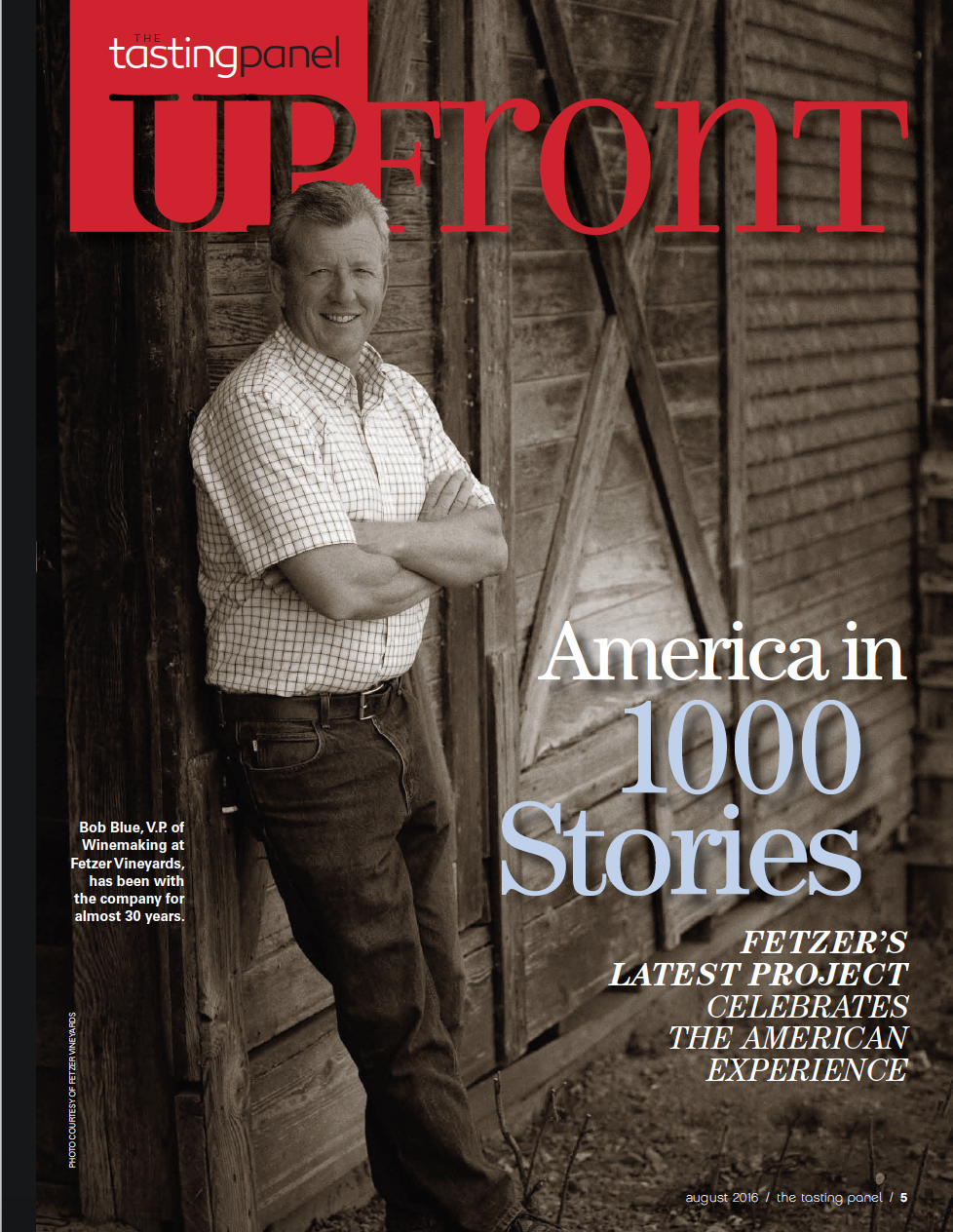The California wine industry is the product of a distinctly American mentality of openness and experimentation, and Fetzer Vineyards’s latest project, 1000 Stories, celebrates the myriad of stories that illustrate this ideal. For the August 2016 issue of The Tasting Panel.

The California wine industry is the product of a distinctly American mentality of openness and experimentation, and Fetzer Vineyards’s latest project, 1000 Stories, celebrates the myriad of stories that illustrate this ideal. As the V.P. of Winemaking at Fetzer Vineyards, a company he’s been with for almost 30 years, Bob Blue has seen a lot of changes in the California wine industry. Blue grew up as a winemaker when grape growing was just part of the overall agricultural profile of Napa Valley, in a time before it was an established, world-renowned wine-producing region. “I was right at that beginning of where Chalone, Acacia, Montelena and Mondavi started doing things, taking it to a new level, and the whole wine business exploded,” he recalls. “It’s so amazing to reflect back on it now, more than 30 years ago, where the California wine business was back then . . . I came up through that era of not having a lot of resources.”
Whether in the grapes they grew or the methods they used to make wine, this wine brings all of these histories together. “There was this real openness to try different things,” as Blue puts it, and the rise of Napa is a real “pull yourself up by your bootstraps” story, exemplifying the best ideals of American entrepreneurship. It’s difficult to imagine today, but at one time winemakers in California couldn’t get their hands on the latest Italian or French equipment, including French oak barrels. Instead, many producers turned to American oak, which at the time were predominantly used to create barrels for aging bourbon. When they needed barrels, they’d turn to existing, accessible sources: “When I first got to Fetzer, we would often get old bourbon barrels. They’d arrive at the winery, we’d flip them over, clean them, then put the juice in to barrel ferment—that was what I experienced in the early years.” It’s a part of the history 1000 Stories is recollecting.
Made predominantly of Zinfandel, with some Petite Sirah and Syrah as blending varieties, 1000 Stories blends fruit from various areas to create a balanced, rich profile—red fruit notes from old vines in Mendocino, black fruit and spice from Dry Creek, plum and prune characteristics from Lodi and green and black pepper from Amador—that highlights the characteristics of what makes these classic growing zones so unique. Zinfandel, too, has a typical American story, according to Blue: “There’s this minor table grape from Croatia that goes west with the Gold Rush and becomes a major grape because the weather works for it. It comes to the U.S. and has a chance to flourish.” Its success originally lay in the fact that it made a great home wine, producing juicy big reds that finished slightly sweet, and it is still a predominant grape of California production. The Zinfandels in the late 70s in particular were mostly aged in American oak, and Blue wanted to bring some of that profile and feeling of that era to the wine.
Uniquely, 1000 Stories is made in batches, more like a bourbon or craft beer, which changes from blend to blend. Each batch (about 5,000 cases at a time) is aged in American and French oak wine barrels, then a small percentage of the blend ages further in new bourbon barrels, the last step recalling that more old timey approach to aging wines. Releasing new batches as cases run out allows for constant experimentation and tweaking of the blend from the various AVAs, while keeping a constant source of wine available on the market. The first batch was released in late 2014, and the newest is Batch 10, with juice from the 2014 vintage. There’s an idea of fusing new and old that 1000 Stories is celebrating, but there’s a twist. Instead of being stuck with bourbon barrels, Blue is intentionally playing with their intense toast: “They’re almost burnt—they are so dark— but it gives the wine a smoky, sage, spicy quality.” Another selection of the blend goes into old bourbon barrels that have been washed before they receive the wine for the final phase of barrel aging. The oak imparts that complexity of dried herbs found in bourbon, and Blue underscores that they are looking to make something that’s elegant and subtle. And indeed, the bourbon barrel aging is nuanced, bringing a touch of herbs, smoke and leather to the wine. Overall, it’s clean and balanced, with soft tannins and sweet fruit that hint of an Amarone, but yet with a surprisingly fresh and mineral underpinning. “It’s a serious wine, not a caricature,” as Blue himself firmly emphasized, “at once full-flavored and balanced, with an intriguing flavor profile we’ve found has broad appeal.”
1000 Stories ultimately is expressing a sort of nostalgia by pulling together all of these classic stories of Americana, from the buffalo on the label to the histories of the immigrants that looked west, down to the wine itself. “There are thousands of stories that are part of the American experience—the country is full of that; the U.S. has the ability to open things up for you, to provide the opportunity for growth and experience,” Blue notes. An American ideal to raise a glass to.
